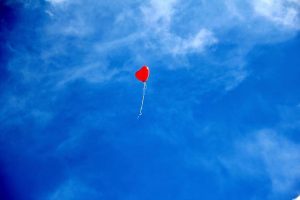What does ‘being present’ mean when applied to the imaginative sphere? And how might this help our clients in their everyday lives? In the fourth part of her series about harnessing the power of clients’ imaginations, psychotherapist, author and transformational imagery pioneer Dr. Dina Glouberman explains why practising mindfulness can also mean engaging consciously and creatively with the image world.
Mindfulness has become central to the zeitgeist, and it indeed makes a wonderful contribution to our lives. But I think the concept needs to be revisioned or at least expanded to include bringing our awareness and focus to the world of the imagination.
When we are fully engaged in the world of the imagination, the present moment to which we are mindfully attending is not in this physical reality, but in an alternative reality of the imagination, one that psychodrama pioneer Jacob Moreno called ‘surplus reality’.
One of my course members, Dorothea, wrote the following about an image she had experienced more than 45 years ago, yet which remained vivid. This is a brief excerpt from an image that emerged when we were looking at her conflicts about the future, which eventually gave her a clear sense of her future direction.
In my image I was on a long ladder propped up against the wall of my school, which was, as in real life, a magnificent gothic-style Edwardian mansion with rolling grounds, deep in the countryside. The ladder was not nearly long enough to reach the top, and the wall seemed to loom above me almost infinitely; but I absolutely knew that I must get it to the point where I could see over the building. The only way to do this was to allow the wind to let the ladder flex out from the wall with every passing breath of breeze, and thereby encourage it to expand in some way. It was very scary, but I had the firm conviction that this could work. Indeed, eventually it did, and the ladder had grown sufficiently for me to see over the top.
Dorothea describes this image in the past tense. But it is clear that during the imaging experience, as she climbed her ladder, she was living completely in that world and in that moment. As a listener, I even felt frightened for her, feeling that if she let her mind wander for a moment she would fall. This is mindfulness in the world of the imagination.
An exercise for staying present in the image world
Perhaps one of the reasons that mindfulness is normally limited to everyday physical reality is the mental and uncreative way we normally use our imagination. We worry, we plan, we regret, we rehearse, we predict. Essentially, we sit in the present, thinking about, and reacting in habitual ways to, our pictures of the past or the future.
By contrast, when we are engaging consciously and creatively with the image world, we may take a space-and-time ship into the future, and experience the future as absolutely present. Or we may go back into a childhood memory and relive it as if it is happening now. And yet because we are doing it consciously, unlike when worry or regret take us over, we are also in charge of the process and can exit at any time.
I call this the ‘Transformational Imagination’ because through it, we tap into our intuitive wisdom and have the possibility of new understandings and transformations. This is the level of the imagination that great scientists, artists, mathematicians, writers, poets and psychotherapists call upon to make the creative leaps that characterise great theory and practice. And it is this imagination that is experienced in the present moment.
Practising staying present in the world of the imagination can also enhance the ability to stay present in everyday life. For example, I do an exercise which I call ‘Stepping off Cliffs’ in which I ask people to imagine a cliff that represents something in their lives, and then ask them to step off. They need all their focus and mindfulness to do this.
Because of the power of the imagination, this can be incredibly frightening, as it would be in real life, and I often take people’s hands and accompany them to the edge. Yet, surprisingly, when they actually step off, in my experience they invariably fall safely, or float, or get wings and fly, or see a bridge rising to meet them, or some other wonderful thing keeps them safe and happy. These patterns in the world of the imagination always fascinate me.
The ‘Stepping off Cliffs’ exercise can be practised again and again as a kind of mindfulness practice (as can another exercise given in my book, called ‘Walking the Golden Path Between the Opposites’). I originally created it and practised it to keep myself calm when walking alongside cliffs in real life, which it has. But it has also enabled many people I have worked with to stay present in the face of challenges.
And it is quite exciting to get a whole group doing it at once!
The script for this exercise is available in Dr. Dina Glouberman’s new book, ImageWork: The Complete Guide to Working with Transformational Imagery (PCCS Books, 2022).



